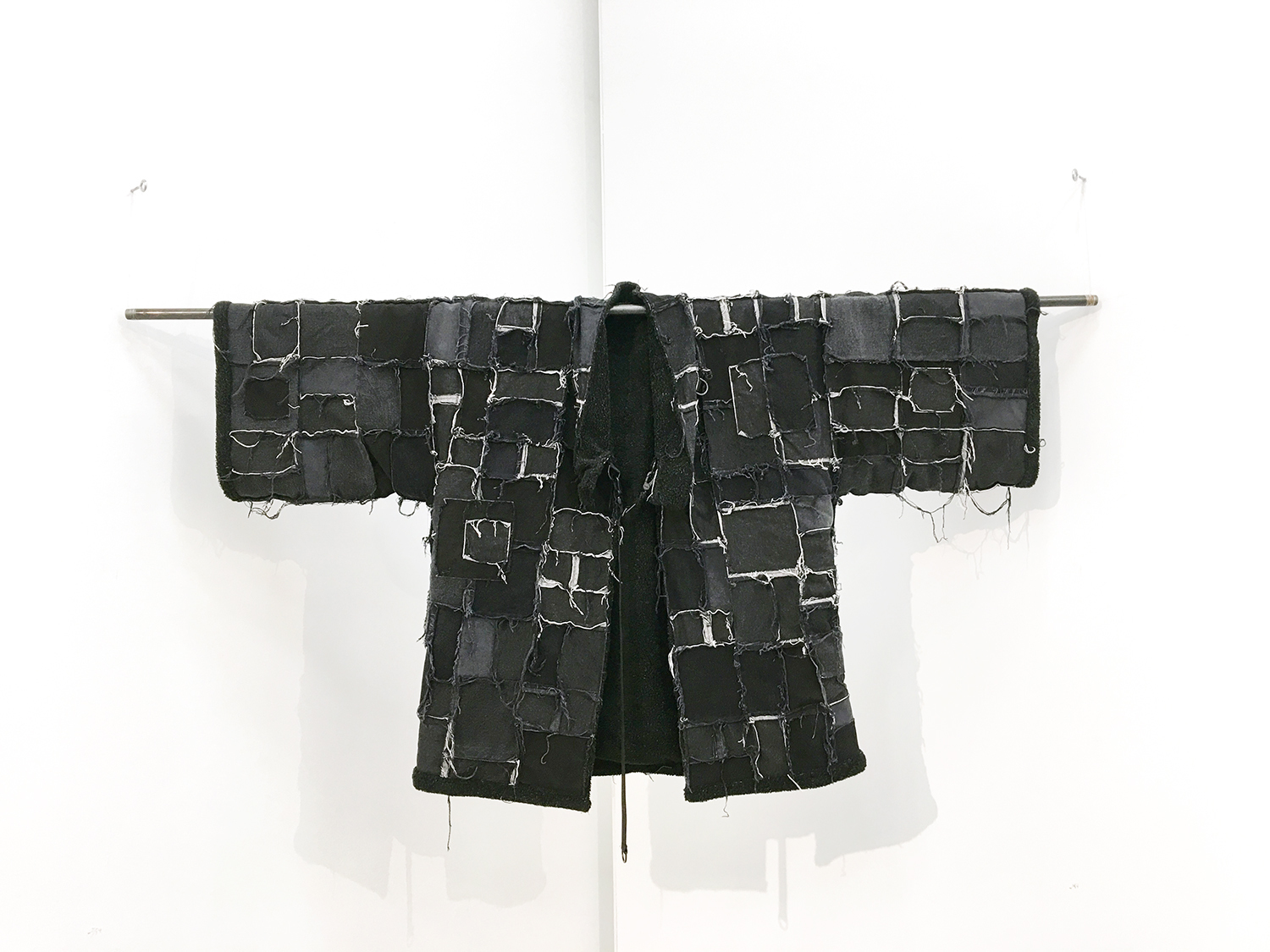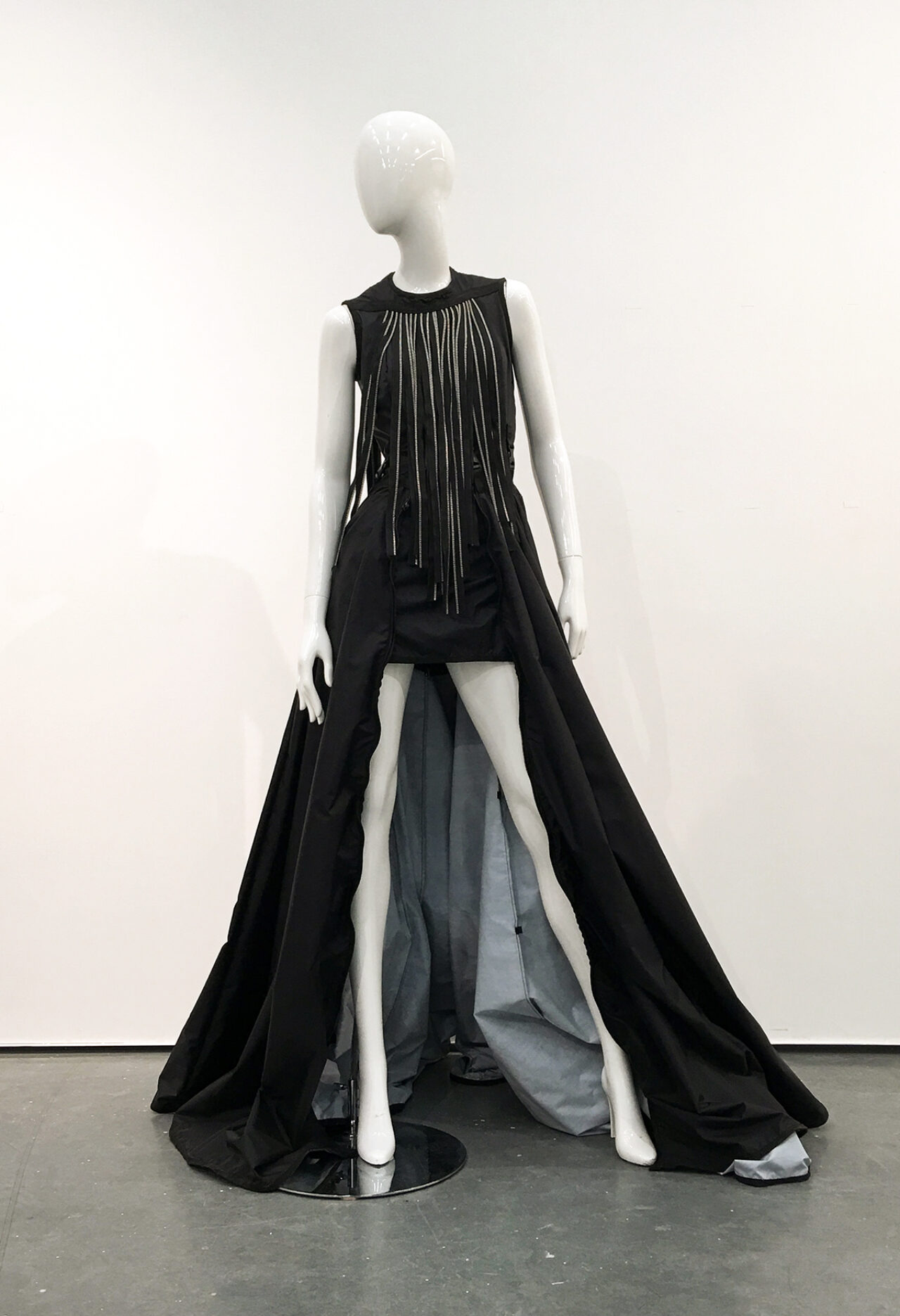Learning Hard Skills at the Soft Shop

Posted on | Updated
Students of all disciplines discover the versatile applications of textile production and design.
Alum Aaron Baart (BDes 2019), a product design technician and developer for Herschel Supply Co., loves to talk about the time he spent working in the Soft Shop while studying industrial design.
For the uninitiated, the “Soft Shop” isn’t a fluffy-lined, teddy-cuddling corner, as it might sound at first blush. Rather, it’s a unique interdisciplinary workspace dedicated to instruction and production related to soft-good product design, and is used by students from a range of programs and departments.
The shop is equipped with industrial sewing machines, a four-thread serger, a domestic sewing machine with pre-programmed pattern stitches, a flatbed leather sewing machine and a digital loom—all the essential machinery needed to produce soft goods. Additionally, the space is filled with hand sewing tools and notions, tapestry looms, mannequins, and dress forms for student use. An assortment of technical fabrics, pattern paper, and fasteners are available for purchase on-site.
Having access to tools like the leather sewing machine—not to mention access to knowledgeable technicians—makes a big difference for a student’s education, Aaron says.
“You think of cutting wood with a handsaw versus cutting with a pencil: the tools you have at your disposal make it a completely different experience. It's more pleasurable, and you get a better finished product,” he stresses.
Hailing from Salmon Arm, BC, Aaron says he knew very little about industrial design or his career prospects when first enrolling at Emily Carr. Getting hit by an “avalanche of information” at the end of his first year helped him reassess the direction in which he wanted to take his degree, and what classes, interests, projects and extracurricular activities he wished to pursue.
In his second year, Aaron took “Textile Production Design: Mass Production” (aka the “backpack class”) where he designed his first backpack and learned all the steps in-between: from the initial drawing to creating a pattern; and from building a cardboard prototype to completing the final product. He says the course was seminal in helping to formalize his knowledge and preparing him to enter the workforce.
“Before the backpack class, you just made up words for what you're doing,” he says.
“Then after that class, you actually are able to say: this is a bar, this is a square stitch or, this is nylon webbing versus polyester.”
While some students come to the shop with specific textile projects in mind, prior sewing experience isn’t a requisite for those who wish to work with textiles, says Jen Hiebert. Jen, the “technician in residence” for the Soft Shop, says students arrive from a wide range of disciplines and backgrounds including animation, digital media and sculpture.
And the skills learned at the Soft Shop can be widely applied. It’s customary, for instance, for Emily Carr instructors to invite the Soft Shop’s technicians into their classes and incorporate textile practices into the broader industrial design curriculum. Additionally, the technicians offer open workshops for students of all stripes to learn technical skills.
“We do have a variety of different entry points for students working here,” Jen says.
“And, we're super happy to help people experiment and look at the steps needed to create a textile-based project.”
For Jen, learning from and collaborating with other students is one of the highlights of the space. “We get everybody from Foundation students right through to master students and researchers working in here.”
But new students should make a special effort to take advantage of all the Soft Shop has to offer, advises Aaron.
“If I can offer any kind of advice it’s: just learn everything that Jen has to offer. Learn everything you want from every piece of equipment in that room, and learn it as soon as you can because it will only help you down the road.”
